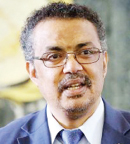On July 26, 2019, the World Health Organization (WHO) issued a new report, “Global Tobacco Epidemic 2019,” to discuss national efforts being made to implement effective strategies from the WHO Framework Convention on Tobacco Control that have been proven to reduce the demand for tobacco. Approximately 5 billion people today are living in countries that have introduced smoking bans, warnings on packaging, and other effective tobacco control measures. Nevertheless, WHO’s recent report found that many countries are not adequately implementing antitobacco policies that could save lives.
These strategies, like the “MPOWER” interventions described below, have been shown to save lives and reduce costs from averted health-care expenditure. The MPOWER report was launched in 2007 to promote government action on six tobacco control strategies in line with the WHO Framework Convention on Tobacco Control to monitor tobacco use and prevention policies. These strategies help protect people from tobacco smoke; offer individuals help to quit tobacco use; warn about the dangers of tobacco; enforce bans on tobacco advertising, promotion, and sponsorship; and raise taxes on tobacco.
Efforts to Improve Cessation
The focus of the latest report is on the progress countries have made to help tobacco users quit.

Tedros Adhanom Ghebreyesus, PhD, MSc
Tedros Adhanom Ghebreyesus, PhD, MSc, WHO Director General, said governments should implement cessation services as part of efforts to ensure universal health coverage for their citizens. “Quitting tobacco is one of the best things any person can do for their own health,” said Dr. Tedros. “The MPOWER package gives governments the practical tools to help people kick the habit, adding years to their life and life to their years.”
Progress is being made, with 2.4 billion people living in countries now providing comprehensive cessation services. However, only 23 countries are providing cessation services at the best-practice level, making it the most underimplemented MPOWER measure in terms of number of countries offering full coverage.
Tobacco cessation services include national toll-free quit lines, “mCessation” services to reach larger populations via mobile phones, counselling by primary health-care providers, and cost-covered nicotine replacement therapy.
Efforts Effective When Implemented
Michael R. Bloomberg, WHO Global Ambassador for Noncommunicable Diseases and Injuries and Founder of Bloomberg Philanthropies, said the report shows government-led efforts to help people quit tobacco work when properly implemented. “More countries are making tobacco control a priority and saving lives, but there’s still much more work to be done,” said Mr. Bloomberg. “The WHO’s new report shines a spotlight on global efforts to help people quit using tobacco and it details some of our most important gains.”

Michael R. Bloomberg
The report showed that while only 23 countries have implemented cessation support policies at the highest level, 116 more provide fully or partially cost-covered services in some or most health facilities, and another 32 offer services, but do not cost-cover them, demonstrating a high level of public demand for support to quit.
Tobacco use has also declined proportionately in most countries, but population growth means the total number of people using tobacco has remained stubbornly high. Currently, there are an estimated 1.1 billion smokers, around 80% of whom live in low- and middle-income countries.
More Report Highlights
Since the last report, issued in 2017, the 2019 report also found:
- Thirty-six countries have introduced one or more MPOWER measures at the highest level of achievement.
- Over half of the world’s population—3.9 billion people living in 91 countries—benefit from large, graphic pack warnings featuring all recommended characteristics, making it the MPOWER measure with both the highest population coverage and the most countries covered.
- Fourteen countries have implemented large graphic warning laws at best-practice level, making it the MPOWER policy with the greatest growth in terms of country uptake during the last 2 years.
- The greatest growth in population coverage was seen in tobacco taxation. The population coverage from this MPOWER policy has almost doubled, from 8% in 2016 to 14% in 2018. While being the most effective way to reduce tobacco use, taxation is still the MPOWER policy with the lowest population coverage.
- Of the 5 billion people protected by at least one MPOWER policy, 3.9 billion live in low- and middle-income countries.
- Fifty-nine countries have yet to adopt a single MPOWER measure at the highest level of achievement—49 are low- and middle-income countries.
- In the world’s 34 low-income countries, 17 today have at least one MPOWER policy in place at best-practice level, compared to three in 2007.
For each MPOWER measure, there have been new countries that have implemented some of the measures at the best-practice level since the last report:
- Seven (Antigua and Barbuda, Benin, Burundi, Gambia, Guyana, Niue, and Tajikistan) have adopted complete smoke-free laws covering all indoor public places and workplaces
- Four (Czechia, Saudi Arabia, Slovakia, and Sweden) advanced to best-practice level with cessation services, but during the same period, six other countries dropped from the highest group, resulting in a net loss of two countries
- Fourteen (Barbados, Cameroon, Croatia, Cyprus, Georgia, Guyana, Honduras, Luxembourg, Pakistan, Saint Lucia, Saudi Arabia, Slovenia, Spain, and Timor-Leste) adopted large, graphic pack warnings
- Ten (Antigua and Barbuda, Azerbaijan, Benin, Congo, Democratic Republic of the Congo, Gambia, Guyana, Niue, Saudi Arabia, and Slovenia) introduced comprehensive bans on tobacco advertising, promotion, and sponsorship
- Ten (Andorra, Australia, Brazil, Colombia, Egypt, Mauritius, Montenegro, New Zealand, North Macedonia, and Thailand) raised taxes to comprise at least 75% of retail prices. ■
DISCLOSURE: The report was funded by Bloomberg Philanthropies. For more information, visit who.int.

